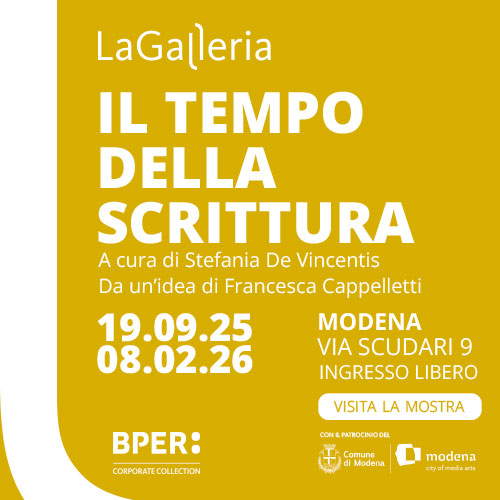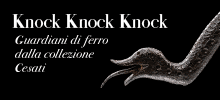
The Serpent Regulus, the little king crawling in Tuscany between folklore and art
The Serpente Regolo is one of Tuscany's legendary monsters-a large snake with bright scales that lives on in ancient as well as contemporary art.
By Redazione | 26/11/2025 16:26
Among the legends of Tuscany, a special place belongs to that of the Serpente Regolo, a fantastic creature that occupies a prominent place in folk traditions stretching from Tuscany to Umbria, Abruzzo, Lazio, and Marche. This mythological entity is generally described as a large snake whose head is depicted as imposing, comparable to that of a child. The appellation "ruler" literally translates to "little king" and establishes a direct link with the figure of another similar mythological monster, the Basilisk, also referred to as the "little king" in Greek tradition, thus fitting into the broader Mediterranean imagery of snake kings.
Its existence and appearance vary according to local narratives. One popular version claims that the Regulus is born from a common viper that, after being split in half, does not succumb but on the contrary grows beyond measure, becoming an extremely vengeful reptile towards those who injured or mutilated it and anyone who dares to speak its name after an encounter. Other tales suggest that a viper can turn into a Regulus after reaching one hundred years of age, or simply if its tail is cut off, in that case developing in width.
In Tuscan lore, the Regulus is described as an imposing reptile, characterized by scales that shine like metal and the possession of two small wing appendages on its back. In Umbria and Sabina it is called in dialect by names such as lu regulu, u regulu, lu regu or u regu. Variants also exist that identify it as a two-headed snake, a figure handed down particularly by the elders of Foligno. In lower Lazio and Umbria, in the Tiber Valley, stories about this mythological animal have been handed down since the postwar period.
The creature is rooted in the folklore of specific Tuscan localities. For example, it is associated with the dungeons of the Medici Fortress in San Piero a Sieve, Mugello. Legend has it that here the serpent Regulus wreaked havoc on livestock and peasants, until, in the 19th century, Napoleon's troops managed to imprison him inside the ancient stronghold, where he is supposedly still imprisoned today. Its importance to the community of San Piero a Sieve is such that the Regulus is depicted on the banner of the traditional Palio, an annual contest between the four districts.
Another place of strong resonance for the Regulus myth is theOrrido di Botri, a deep limestone gorge in the province of Lucca. Here, legend has it that a ferocious specimen hides among the rock walls, taking advantage of its ridges to glide and launch itself at human or animal victims, then mauling them once dragged into the overhang. In the countryside, the Regulus was often used as a bogeyman by parents and grandparents to keep children at bay during the harvest, warning them that the monster, known to swallow wayward stragglers, was attracting other snakes with its hissing sounds.
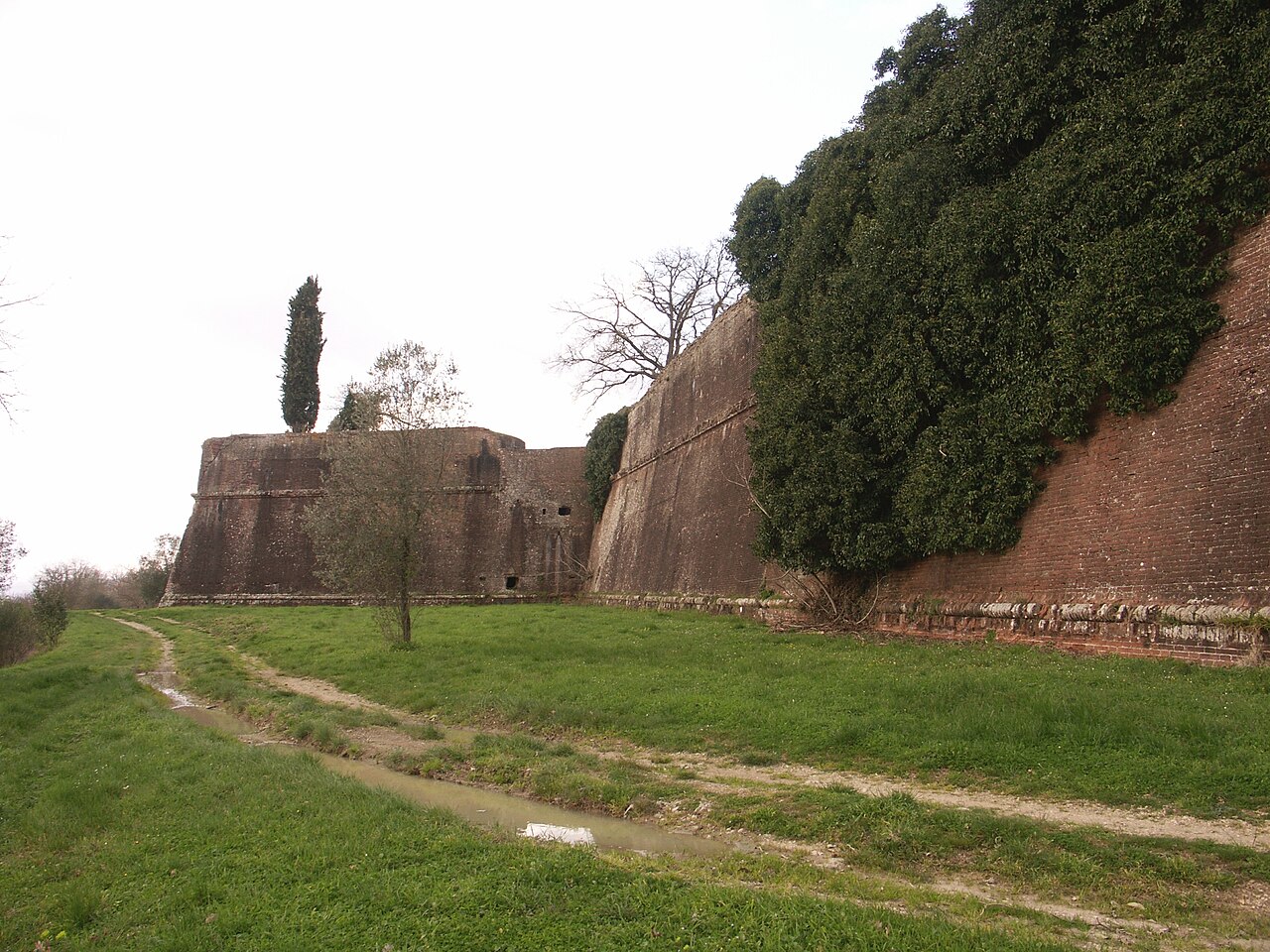
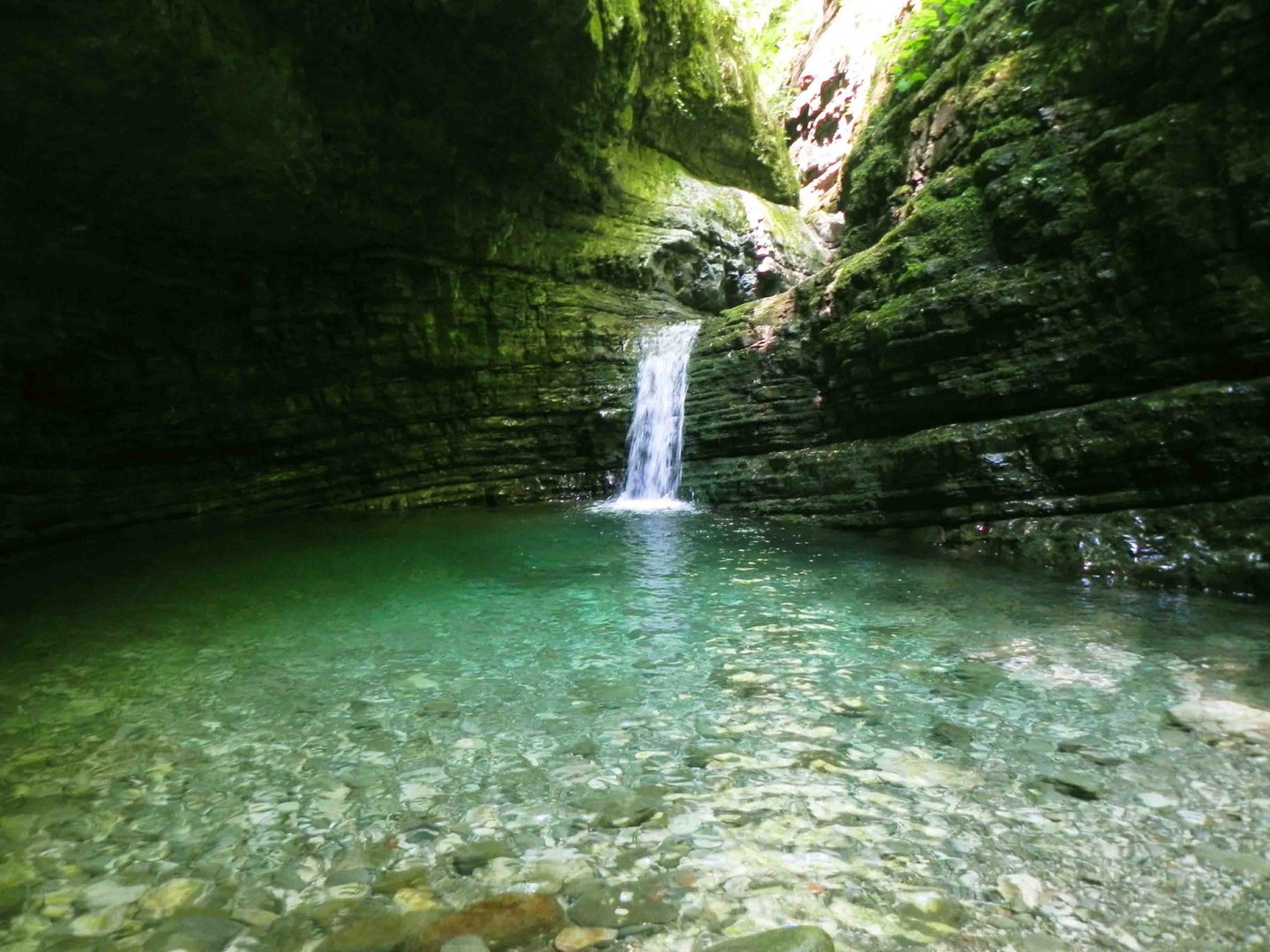
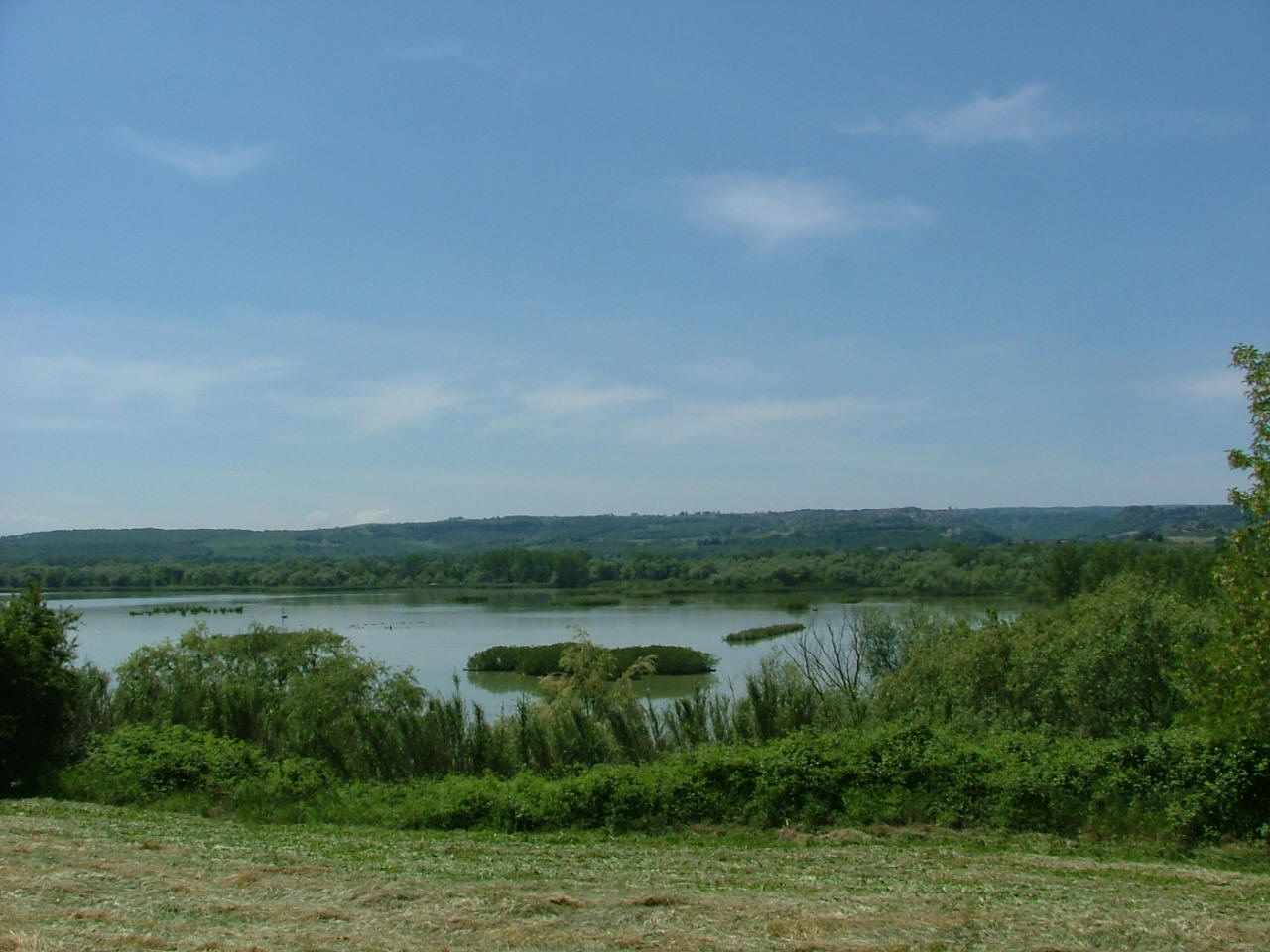
The Regulus' influence transcends orality and folk tradition to become fixed in stone, providing one of its best-known and most studied historical iconographic representations. The most significant example is found in Tuscany, at the Pieve dei Santi Vito e Modesto in Corsignano, the ancient name for Pienza, whose origins date back to the seventh century, although its present appearance is predominantly Romanesque (12th-13th centuries). Although the interior of the church is sober and bare, one detail catches the attention of scholars: the two serpents carved on one of the capitals of the left aisle. This figure is considered one of the few "original" representations of the Serpent Regulus that have come down to us. The relief shows two snakes, one lying along the entire length of the capital and the other coiled in a coil in the middle of the body.
This depiction could be interpreted as the Regulus, although it is not easy to understand the reason for the presence of these reptiles, which are usually associated with evil in churches. Local historian Silvio Bernardini, for example, has observed that these two snakes, contrary to what usually happens in similar depictions where snakes are either driven away or crushed, stand "alone and quiet," suggesting that they might not symbolize evil, but rather act as tutelary deities (protective spirits) of the church. Bernardini hypothesizes a connection with the mythological figure of Melampo, who according to Greek myth was the first mortal to whom the gods had granted the faculty of divination, which was obtained thanks to two snakes that had lapped at his ears.
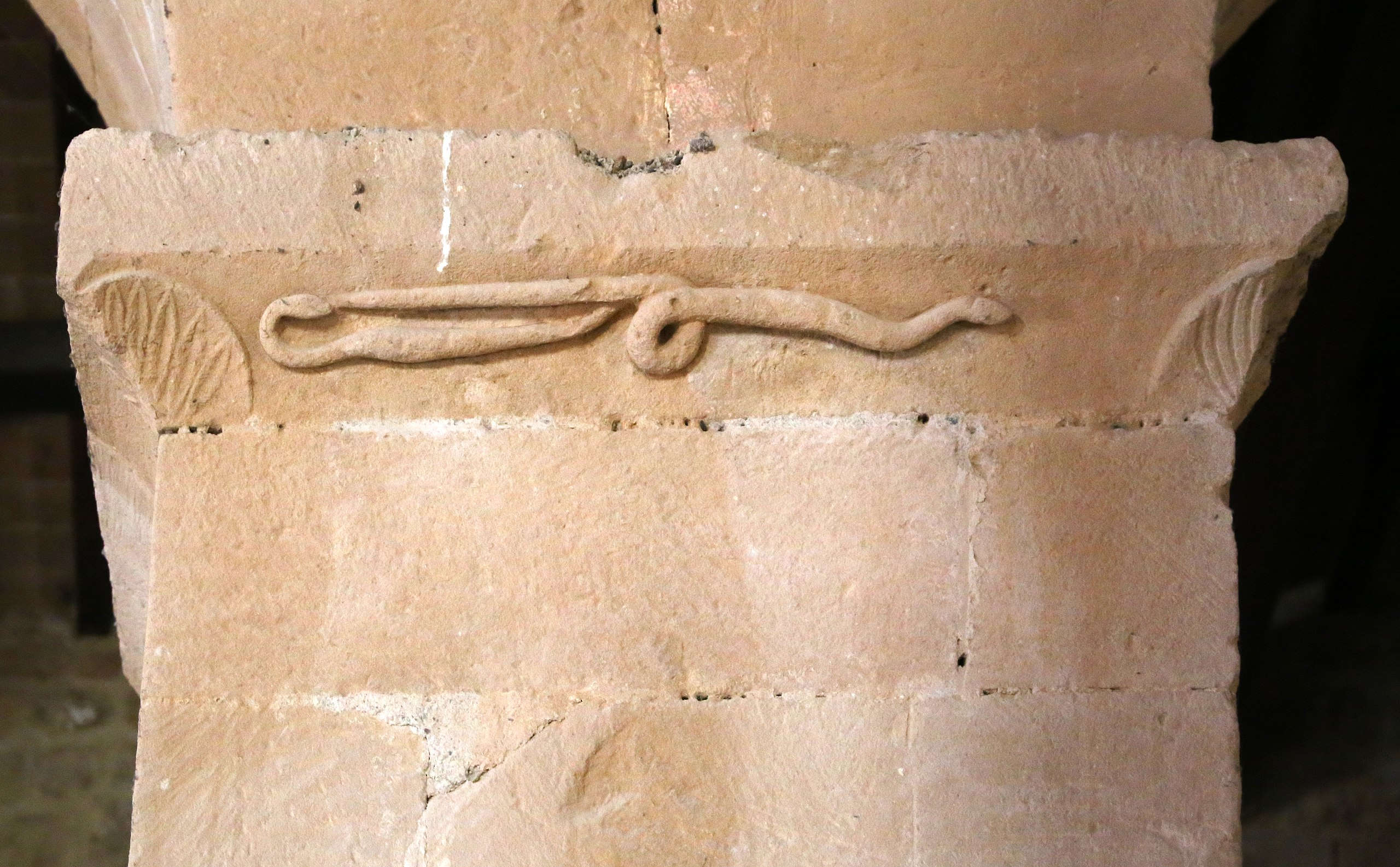
The ancient figure of the Serpente Regolo has not remained confined to folklore books or Romanesque architecture, but has been actively reinterpreted in contemporary art and Land Art projects.
One of these is the work The House of the Serpent Regulus, or the story of a river, a path, a thread, and a snake, created by artist Chiara Camoni. The environmental sculpture was inaugurated in 2025 at the Valico della Crocetta, on the road that connects Montepiano, a town in the Apennines near the border with Emilia, to Barberino del Mugello, and is reached by a trekking route. The work looks like a large, outstretched snake slithering and plunging through the vegetation.
Camoni chose to work with materials that would strengthen the link with the surrounding environment: he used locally collected stones and salvaged materials, combined with specially created terracotta elements. The sculpture is the result of a workshop process that involved local institutions and families, who participated in collecting soil, bark and plants along the forests and waterways of the Wool and Silk Road, transforming these elements into natural pigments used to decorate the tiles that make up the snake's body. Through this collective gesture, the work establishes a material and affective link between the art and the landscape. The artist sought an insertion into the landscape that was non-monumental; the sculpture, dry-fixed, is intended to change over time, intertwining with roots, grasses and plants, reflecting the open and changing form of the Regulus, which emerges and disappears into the ground, becoming narrative and environment. The "little King" here evokes a silent and hidden power that merges intrinsically with the earth.
Another significant artistic reinterpretation is the installation Regulus by Cristiano Carotti, hosted at La Serpara - Giardino di Sculture, on the border between Lazio and Umbria. This site-specific work is designed to be a practicable environmental installation that invites an immersive and meditative experience. Carotti fuses the local legend of the Regulus with the universal symbolism of the Ourobòros, the snake biting its own tail. This linearity that becomes a circle transforms the Regulus into a symbol of its own regeneration, representing a continuous cycle of unity and infinity, death and rebirth.
To realize his vision, Carotti used "hard" industrial materials such as stainless steel for the internal structure, combining them with more delicate and historical elements such as colored paracera, pieces of glass of high historical value donated by Roman artisans. This contrast between industrial materials and the work's esoteric significance is typical of Carotti's work. Carotti's snake, which is luminescent, is structured as a threshold that the audience must cross to reach a point of meditation on a stone that emerges from the Rio Chiaro River, thus allowing art and nature to insinuate themselves into each other. The work, born of a violent event (the mutilation of the viper), transcends this violence into a regenerative wonder.

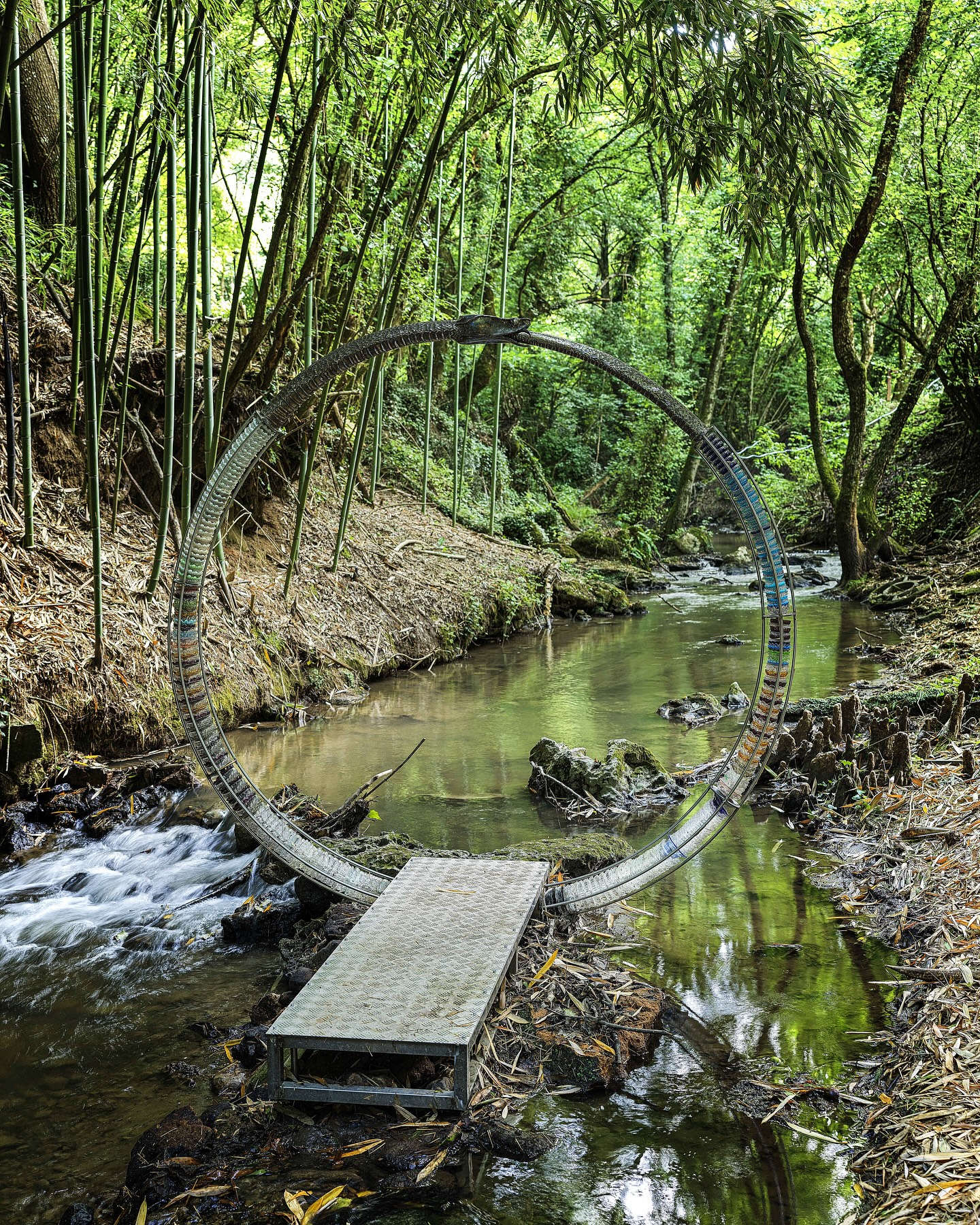
In addition to visual art, the image of the mythological snake has also found a place in gastronomic traditions. In Pienza, the dessert known as the "Serpe di Pienza" is still alive. This is a typical dessert made of ground almonds, sugar and stiffly whipped egg whites, processed to take the shape of a sleeping snake, coiled into a spiral, with its vaguely triangular head decorated with coffee beans or raisins for eyes and a piece of candied fruit as a forked tongue. Although this preparation may be reminiscent of other similar desserts in Central Italy, such as Perugia's "Torciglione," the Serpe di Pienza is believed by many to be a reproduction of the Serpente Regolo.
The tradition associated with this sweet is deep: its consumption went beyond simple gastronomic pleasure, acquiring a magical and augural value. Eating the snake symbolically meant overcoming and destroying evil, but also absorbing all the virtues attributed to the magical creature: strength, prudence and wisdom. The link with almonds is strong in the Pienza area, historically rich in almond trees, so much so that the fruit figured in local trade and production in centuries past.
The Serpente Regolo, with its royal etymology and complex history, is thus confirmed as a powerful symbol. Its persistence in the folklore of Tuscany and Umbria, translated into ancient sacred sculptures and modern art installations intended to blend with the environment, demonstrates its ability to represent a hidden power and the constant transformation that binds land, myth and human creativity. It is a narrative thread that, like its sinuous form, winds its way from Roman times to contemporary times.


